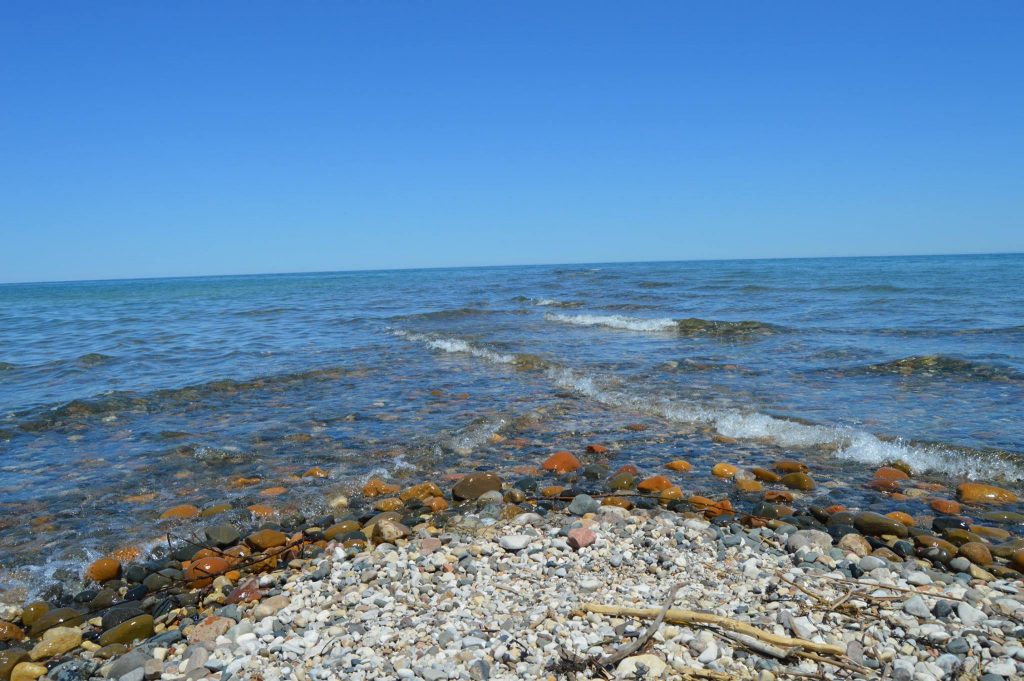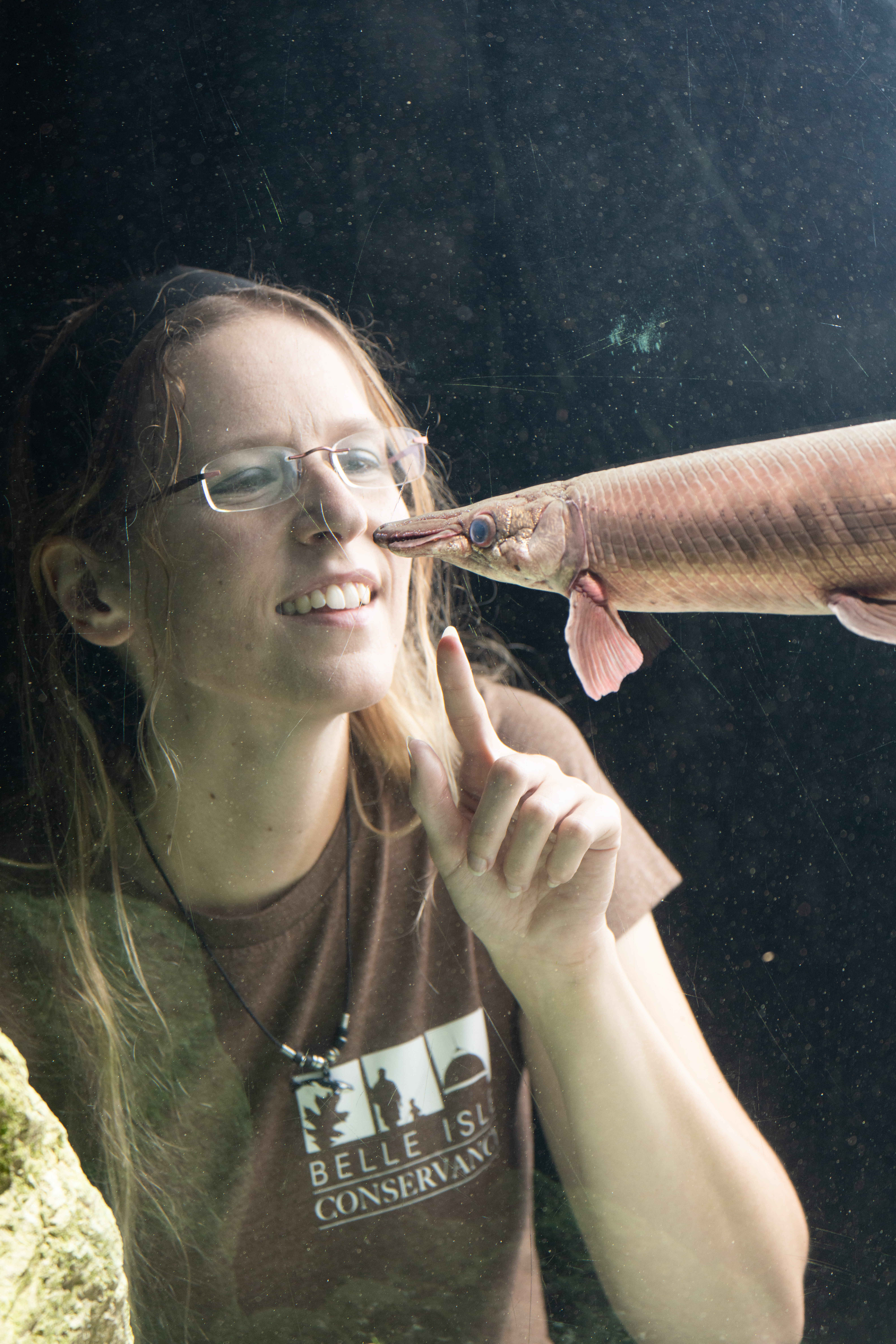Know Your Enemy: Getting To Know Great Lakes Invasive Species
Learn about round gobies, zebra mussels and other Great Lakes invaders in “Invaders on the Menu,” presented by Great Lakes Now, WDET and the Belle Isle Conservancy.

Invasive species are a big part of the Great Lakes ecosystem. While they haven’t always been here, it’s important to understand how the arrival of some species of fish, plants and mussels are impacting Michigan’s freshwater ecosystems.
Amanda Murray is an Aquarist at the Belle Isle Conservancy who knows a thing or two about some of the most prolific invasive species swimming around Metro Detroit waterways.

Murray says one of the most well known invasive species is the round goby. She says this small fish is about 3-6 inches in length and is native to Eurasia, where you’ll find them in the Black Sea. “They have little fins… you’ll see them along the bottom kind of jumping along… they look kind of similar to sculpin, which are native fish,” explains Murray. She notes that what makes gobies able to out-compete Michigan’s native fish is their “really good sensory system… that allows them to see in complete darkness,” says Murray, noting that “this gives them a huge advantage to other fish” in similar habitats.
As far as how gobies actually arrived in the Great Lakes, Murray says ballast waters are to blame. This is essentially a term used to describe what happens when ships get here through the ocean and dump their water — along with any hitchhiking species — in the Great Lakes. Murray says gobies are considered prolific and spread very fast when they arrived “because they have a lot of adaptations that allow them to out compete a lot of our native species,” says Murray.
However, gobies aren’t the only invasive species making their presence known in the Great Lakes. Zebra mussels are another infamous invasive, and they are also a primary food source for gobies. Gobies, which have a voracious appetite, eat Zebra mussels along with the eggs of native species like perch, sturgeon and walleye. The more gobies there are, the more native sites for fish like sculpin are taken away.
If you want to see a round goby up close, head to the Belle Isle Aquarium. “We have them here to introduce people to these fish,” says Murray, explaining that when people can recognize invasive species, it helps to create a greater understanding of what’s happening in our ecosystems.
To learn more about invasive species, watch “Invaders on the Menu,” hosted by the Belle Isle Conservancy, Detroit Public Television’s Sandra Svoboda and WDET’s Annamarie Sysling:
Trusted, accurate, up-to-date
WDET is here to keep you informed on essential information, news and resources related to COVID-19.
This is a stressful, insecure time for many. So it’s more important than ever for you, our listeners and readers, who are able to donate to keep supporting WDET’s mission. Please make a gift today.
